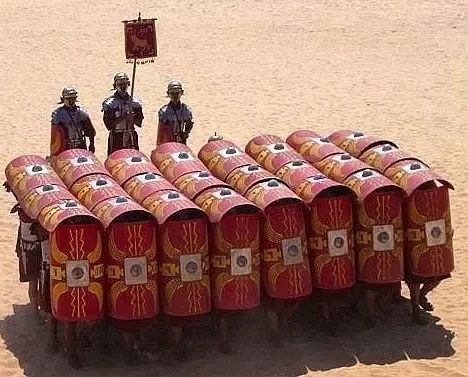All Together Now
By Anthony Casperson
7-9-22
“Who’s going to stop me?” the villain gloats over a collection of everyday people.
A single voice calls out, “I am.” The person—usually the hero of the story or one of their close compatriots—steps forward.
Seconds pass while the antagonist laughs at what they assume is this single peon of a defense. But another voice cries out of the crowd, “And me.” The villain arches their brow at this new disturbance, but remains unalarmed.
And then another person steps up, “I will too.” The voices arrive faster. “Me.” “I will.” “Can’t stop all of us.” Until the whole crowd has risen as one against the far-outnumbered villain. And the once-subjugated people come to defeat the tyrant set over them.
All because one person had faith to fight. Which led another to see the truth. And another. Until as a collective, their trust in what is right overcame the trials set before them.
It’s a common enough trope for stories that we’ve doubtless seen at least one example of in our lives. And though it seems kinda cheesy to assume that all it takes for a flood of faith to flow is for one person to stand up and call others to follow, it’s true that sometimes all that’s needed for a conquered crowd to become an army of freedom is one person to call the formation. Well…and others to actually be faithful to heed the call.
In this blog series through the armor of God, we’ve reached Ephesians 6:16 and the shield of faith. While we often think about shields as personal protection in the midst of battle, I believe Paul has something more in mind here.
The word used for shield isn’t some small little buckler. No, it’s literally built off of the Greek word for door. The rectangular defense that’s nearly as tall as the warrior carrying it. And why is it that this is an important distinction? Because of what the Roman soldiers that Paul had in mind would often do with those shields.
One of the more potent strategies of the Roman legion was called the testudo—or tortoise—formation. In the midst of battle, the captain would call for the ranks to turtle up. The front line would crouch low, setting their shields tightly together. Then, the next line would lever their shields on top of the front line, angling theirs back. And then the next line would do similarly, until the whole rank of soldiers was protected from any flying ammunition.
If one soldier didn’t form up, if one warrior wasn’t faithful to the call, the whole thing could be found useless. A single hole could allow an arrow, a javelin, or a dart to find a place to pierce. And with each fallen soldier, another hole was made. Then another. And another. Until the rank of warriors fell.
The strength of the shield wasn’t to protect just one person from danger, but for the group to faithfully answer the call and come together. Because while one person with faith can still fail to overcome an enemy, the collection of many faithfully standing together can achieve great things.
And here’s where we get one other thing wrong about shields. The point of the tortoise formation wasn’t to outlast the enemy, waiting for them to come to the shielded warriors. But rather for the formation to move through the no-man’s-land between the armies. The shields allowed them to progress closer, without fear of ranged weaponry.
It’s an active weapon, not a passive one.
Faith is action. I’ve mentioned in a few blogs throughout the years—and in my book, Hydroponic Spirituality: Thriving in The Depths—that this is the point of faith. It causes us to move.
One of the best places to see the combining of faithful shields in the bible comes from Hebrews 11. The faith chapter. We see shield upon shield of historical figure after historical figure fall into place. Abel, Enoch, Noah, Abraham, Sarah, Isaac, Jacob, Joseph, Moses’ parents, Moses, and Rahab. Each one with a connecting story that shows the action they performed in faithfulness to God. Every “by faith” closely followed by a verb. A word of action.
The author of Hebrews wanted to continue on listing the spiritual warriors set in shielded formation, but saw how much room it would take on the scroll and merely mentions Gideon, Barak, Jephthah, David, Samuel, and the prophets.
But the point of that author—which we see as they move on to chapter 12—was to call us, each of us, to join our faith with these others. To join our shields with these faithful warriors. To faithfully heed the call to form up and move. (Though they do this using a metaphor of racing instead of war. But the point is the equivalent.)
The shield of faith calls us to move, to fight in the name of God in this spiritual war. We don’t get to sit back and wait for the enemy to come to us. No, we strive ever closer to the battle line, blocking the various attacks of the evil one. All so that we can faithfully act in line with the ways of God.
The first voice has already answered the villain’s gloating with an “I will.” And more have stepped forward, placing their shields in front as they say, “And me.”
The question is, will we followers of Jesus today faithfully heed the call? Will we join our faithfulness to the shields of those who’ve come before? Will we add our name to the list of those who acted as God had called them?
Or will we refuse to join the ranks? And leave space for the enemy’s searing attacks.
It’s time to form up. All together now.




